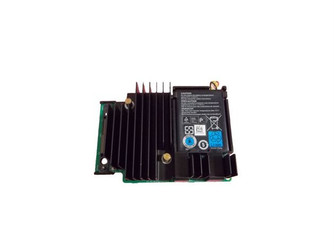Here's How to Configure PowerEdge RAID Controller (PERC) H730
Posted by Dylan Kerling, Dell Certified Technician on 7th Oct 2019
TechTip #8: How to Configure PowerEdge Server RAID Controller (PERC) H730
Storage demand continues to rise for most companies as processing tools get more sophisticated. For network system managers, it means getting the highest performance out of every server. Configuring the RAID Controller is a key step to achieving it. To help you do it, here are easy steps for configuring a Dell PowerEdge Server RAID Controller (PERC) H730.
Step 1: System Boot
In order to access the raid configuration utility, you will need to boot the system. During POST press Ctrl+R when POST references the PowerEdge Expandable RAID Controller. Once booted into the configuration utility, you will initially be greeted by the Virtual Disk Screen. (See image 1)

Image 1: Virtual Disk Screen
The management screen shows all of the disk groups and virtual disks created on the raid controller. Most of the configuration can be done from this screen by highlighting the very top line, which will reference the H730 controller. Once highlighted, press F2 to open up a drop menu with a number of options. The first of which is going to be creating a Virtual Disk. (See images 2 & 3)

Image 2: Virtual Disk Management Screen

Image 3: Virtual Disk Management Screen
Step 2: Create A Virtual Disk
Once you’ve selected " create Virtual Disk" you will be greeted by a new screen with options for the raid level. You will see Virtual Disk size, name, and selection of what available disks will be a part of the array being created.

Image 4: Virtual Disk Management Screen
Step 3: Initialize The Virtual Disk
Once the Virtual Disk is created, you will get a message saying the newly created Virtual Disks should be initialized. In order to do this, you will need to scroll down to the newly created Virtual Disk and press F2 once highlighted. It will pull up a drop menu with Initialization being the first option. Press the right arrow, and it will bring up a secondary menu with Start Init, Stop Init, and Fast Init. being the options. Fast Init will only take a few moments, but it will do a full initialization in the background after the fact. Start Init will start the full initialization, which can take hours depending on the size of the Array.
Step 4: Clear The Configuration
The next option within the f2 menu is Clear Config which does exactly what the name suggests. It will wipe out all raid arrays that have been created on this system. This should only be used if your intent is to start fresh with the drives and controller.
Step 5: Foreign Configuration
Foreign Config is the next option but will only be selectable in very specific circumstances. Generally speaking this will only come up when dealing with drive failures or replacing of drives. If you’re experiencing issues and some or all of your drives have gone into a foreign state and you’re not familiar with raid you may want to contact a consultant or IT professional with experience as there can be multiple different triggers for this and data loss is possible depending on what has gone wrong and what actions have taken place to attempt to fix it.
Step 6: Security Key Management
Next is Security Key Management which will be used when setting up SED drives(Self Encrypting Drives) This allows you to set the security key for your SED drives so that if the drives were ever stolen the data on the drive is entirely encrypted and inaccessible without the key. This is entirely unused when using standard drives.
Step 7: Converting drives to RAID and Non-RAID
Lastly, there are the options for converting drives to be RAID capable and Non-RAID. This allows you to use individual drives as a passthrough, whereas in RAID capable mode the drives need to be in a raid configuration to even be accessible by operating systems. This is a new feature on the H730 as prior to this you would be required to create single drive RAID 0 devices to utilize single drives.
Step 8: Physical Disk Management
The Physical Damage Management screen is where all of the information about individual drives is located. It will give you information regarding drive type, size, condition state, disk group, and drive vendor.
Step 9: Drive States
There are 6 different drive states that a drive can be in.
- Ready: Means the drive has no current configuration and is ready to be used.
- Online: Means the drive is currently in an array and functional
- Failed: Means the drive is failed and unusable.
- Foreign: Means the drive has a configuration on it that doesn’t match what the raid controller expects. If this has happened on a previously functional system there is likely an underlying issue or error that forced the drives into a foreign state.
- Hotspare: Means the drive is currently setup to automatically rebuild into an array if a drive fails.
Other Helpful Information
Non-RAID means the drive is currently in passthrough mode, and will allow the drive to be accessed individually within an operating system. (See images 5 & 6)

Image 5:Drive State

Image 6: Drive State
The Controller Management screen has a number of options for the raid controller itself. It also has an option to factory reset the controller to default settings.

Image 5: Controller Management Screen
The Properties screen is where you will find information about the controller itself such as the firmware version, temperature readings and controller status.

Image 6: Properties Screen
Call today to learn more from a network specialist at 651-633-0095.
Find additional Velocity Tech Solutions Tech Tips at #VTStechtips

